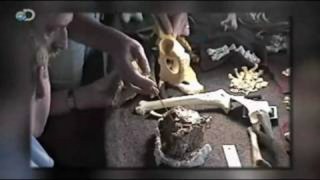Following the publication in October 2009, several works in the discovery and study of 4.4 million years ago partial female skeleton nicknamed Ardi in the journal Science, Discovery Channel presents a world premiere special, Ardi Discover documenting ongoing research, intense leading up to this landmark publication of Ardipithecus ramidus fossils.
Scientific research began in the Ethiopian desert 17 years ago, and now opens a new chapter in human evolution, revealing the first steps in the evolution of our ancestors took after they diverged from a common ancestor that once shared living with chimpanzees.
Central Ardi skeleton, the other hominids that lived with, and the rocks, soils, plants and animals that constitute their world were analyzed in laboratories around the world, and scientists have published their findings in the journal Science.
Ardi is currently the oldest skeleton of our (hominid) branch of the family tree of primates. These findings reveal an initial degree Ethiopian human evolution in Africa, which predates the famous Australopithecus nicknamed Lucy.
Ardipithecus was a woodland creature with a small brain, long arms and short legs. The pelvis and feet show a primitive form of bipedal walking on the ground, but Ardipithecus was also a capable climber of trees, with long fingers and toes of their feet that allows us to understand like a monkey. The findings to answer old questions about how hominids became bipedal.





















